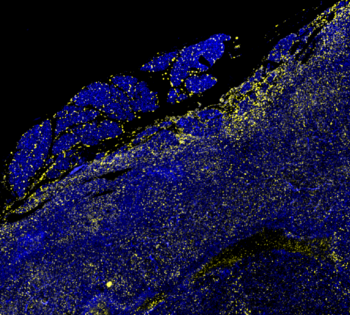28/10/2025
Print PageCombination of two drugs effective in animal model
What was the research question or scientific inquiry behind your study?
Pancreatic ductal adenocarcinoma (PDAC) is among the most aggressive cancers and engages multiple signaling pathways to sustain growth, survival, and therapy resistance. The PI3K pathway is central in this process, yet its inhibition as monotherapy has so far failed clinically. The SUMO machinery, in turn, regulates numerous proteins and helps tumor cells adapt to stress. We investigated whether both systems form a mutual dependency that could be therapeutically exploited through dual inhibition.
How did you approach the topic?
We applied state-of-the-art screening approaches to uncover key survival strategies in tumor cells. In genome-wide CRISPR/Cas9 screens, we systematically inactivated genes to identify vulnerabilities within the SUMO machinery and PI3K signaling pathway. Complementary drug libraries and transcriptomic, proteomic, and phosphoproteomic analyses were performed. We then used patient-derived organoids and mouse models to validate these findings in disease-relevant settings.

What did you discover?
Pancreatic tumors employ different variants of the PI3K signaling pathway. Strikingly, only the PI3K-α and PI3K-δ isoforms showed a strong functional link to the SUMO machinery. Their combined inhibition triggered multimodal cell death in tumor cells — a mix of different cell-death processes that can also activate the immune system. In addition, the tumor microenvironment was remodeled: Key immune fighters, the cytotoxic T cells, became activated. Other immune cells, the macrophages, shifted from tumor-promoting to immune-stimulating states. We were surprised by how pronounced the remodeling was. These and other changes created a milieu supportive of anti-tumor immunity.
What’s your takeaway?
Our study uncovers a therapeutically exploitable co-dependency between PI3K-α/δ and the SUMO machinery in pancreatic cancer. Dual inhibition not only induced a tumor-intrinsic multimodal cell death program, but also reshaped the microenvironment into an immune-permissive state. In first mouse experiments, tumor growth was suppressed without obvious toxicity. The strategy opens up new therapeutic perspectives, especially for combination therapies that engage the immune system, but requires careful clinical evaluation.
Link to original press release
Link to original publication